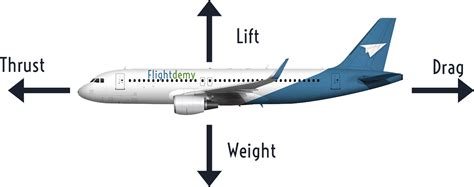The physics behind airplane flight might seem straightforward at first glance, but a deeper dive reveals a world teeming with complexity and nuanced intricacies that both seasoned pilots and aerospace engineers alike explore and debate. A fundamental concept to understand is that lift, the force that allows airplanes to fly, is much more than a product of wing shape and airspeed. While traditional explanations like Bernoulli’s principle and Newton’s third law provide the basics, they don’t fully capture the sophisticated interactions at play. Let’s examine some critical factors, beginning with why airplane wings often have an airfoil shape.
An airfoil-shaped wing is not just a random design choice; it optimizes the aircraft’s ability to generate lift efficiently. An airfoil with a cambered (concave-down) shape produces more lift for a given wing loading and angle of attack, which means the plane can fly stable at various speeds without drastically changing its nose pitch. This is crucial when considering operational parameters such as landing approach. When landing, pilots deploy flaps on the wings. These flaps increase the wing’s camber, allowing the plane to fly slower without the need to pitch the nose excessively upwards, maintaining better control and visibility of the runway.
This brings us to the concept of stalling. As commented by users like hyperpape and Nition, when an aircraft wing exceeds a certain angle of attack, the lift it produces starts to diminish, and drag rapidly increases—this is known as a stall. A well-designed airfoil can generate more lift before reaching the stall angle, an essential consideration for aircraft stability and performance. The relationship between lift and the angle of attack is not linear; it’s a curve that tops out and then falls sharply. Flaps can complicate this further by allowing increased lift at lower speeds, but there’s a limit to how they can be utilized without negative consequences, such as excessive drag or complex aerodynamic interactions.
Speed also plays a pivotal role in maintaining lift and avoiding stall. When the airspeed is too low, the aerodynamic forces on the wings are insufficient to maintain lift, causing a stall. This is why increasing speed is a go-to maneuver for pilots to recover from a stall. Alternatively, reducing speed properly with flaps down increases lift and lowers the stall speed, allowing for safer, slower flight during critical phases like landing. User comments highlight this balance: as rootusrootus points out, technological advancements like lighter, more powerful internal combustion engines were key in overcoming early aviation hurdles, improving the power-to-weight ratio vital for sustained flight.
Modern discussions about Vertical Take-Off and Landing (VTOL) technology reflect how engineering continually evolves to solve aviation challenges. VTOL aircraft like the Lilium Jet represent a radical departure from traditional fixed-wing designs. These aircraft aim to combine the vertical lift capabilities of helicopters with the aerodynamic efficiency of airplanes. Despite some skepticism in the comments about the practicality and economic feasibility of current VTOL designs, it’s clear that if any VTOL model will succeed, it will need to overcome significant challenges, particularly concerning energy density and efficient propulsion.
Historical perspective is vital in understanding how we arrived at current aviation technologies. As multiple users mentioned, the Wright brothers’ success came when they understood the need for lightweight internal combustion engines. They also recognized the necessity of control surfaces for stable flight. Without these innovations, modern advances wouldn’t be possible. In today’s context, continual improvements in battery technology and materials science will likely play similar roles in shaping the future of aviation, enabling more efficient, safer, and versatile flight.
In conclusion, the journey of understanding airplane flight is one of continuous learning and innovation. Whether through refining the shape and function of airfoils or pioneering new technologies like VTOL, the field of aerodynamics is as dynamic as the air that aircraft navigate. The collective knowledge from historical breakthroughs to current engineering challenges paints a comprehensive picture of why and how we fly.


Leave a Reply